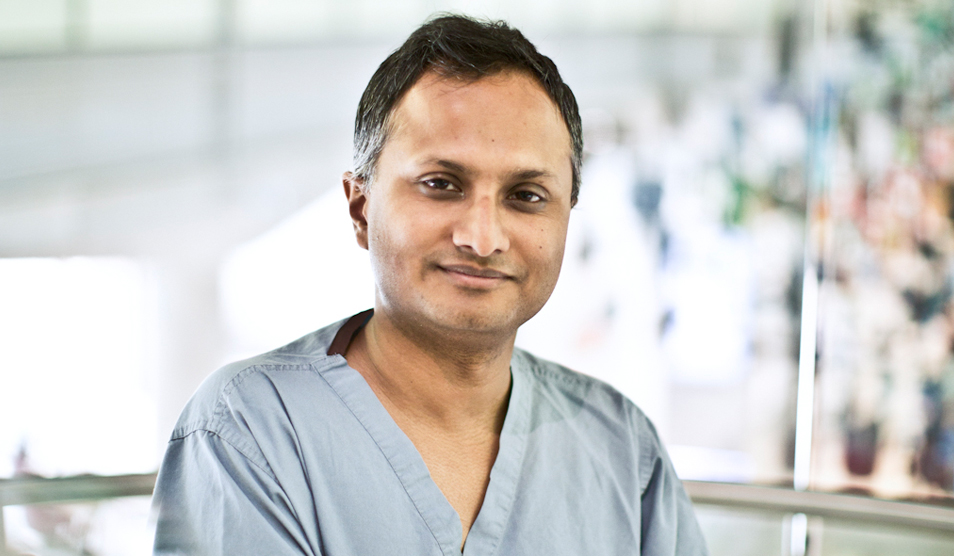Men with prostate cancer willing to accept lower survival odds to avoid incontinence, impotence, repeat treatments
 Men newly diagnosed with prostate cancer say they would trade some improvement in their odds of survival for improvements in side effects and quality of life, according to research presented at the November 2018 NCRI Cancer Conference held in Glasgow, UK.
Men newly diagnosed with prostate cancer say they would trade some improvement in their odds of survival for improvements in side effects and quality of life, according to research presented at the November 2018 NCRI Cancer Conference held in Glasgow, UK.
Prostate cancer is one of the most common forms of the disease in men but in many cases it is a slow growing disease with relatively good survival, even if left untreated. Treatment can include surgery or radiotherapy, but both can cause urinary incontinence and a loss of sexual function. Some patients will spend weeks or months recovering from treatments and some may need a second round of treatment.
The new study suggests that, while patients value a longer life, they also value quality of life and may be willing to choose less treatment on that basis.
The study was presented by Hashim Ahmed, (pictured above) Chair and Professor of Urology, Imperial College London and Chair of NCRI’s Prostate Cancer Clinical Studies Group. He explained: “Men with early prostate cancer have to choose between active surveillance, with regular check-ups, and more invasive therapy, such as removal of the prostate gland or radiotherapy. Previous research suggests that men with low-risk prostate cancer do not gain improvements in survival at ten years following treatment. Men with high-risk prostate cancer gain a five per cent improvement in ten-year survival with treatment. In men with medium-risk disease there is uncertainty over whether treatment affects survival.
“Men who have treatment do suffer side effects including urine incontinence, requiring daily use of pads, loss of erectile function, despite medication like Viagra, and some will require further treatment.
“We know men wish to live longer, but many men get depressed following treatment and their quality of life and personal relationships are affected.”
Professor Ahmed and his colleagues worked with 634 men who had been newly diagnosed with prostate cancer at UK hospitals. The men had only been told their diagnosis and given general information. They had not yet discussed any specific treatment with their clinicians.
In all cases, the cancer had not yet spread. Seventy-four per cent had low or medium risk cancer and 26 per cent had high risk cancer.
Men were presented with two different hypothetical treatments that were different in terms of their likely impact on survival, incontinence, impotence, recovery time and the chance of needing further treatment. The men were asked to say which of the two hypothetical treatments they would pick and this was repeated several times with varying impacts on survival and side effects.
Based on the men’s choices, researchers were able to quantify how important each factor was for the men, on average.
The results showed that survival was the most important factor, followed by avoiding incontinence, not needing further treatment and finally, maintaining an erection.
However, they also suggested that patients were willing to make trade-offs between side-effects and survival. The choices the men made suggest that, on average, they were willing to give up a 0.68% chance of improved survival if that meant they could gain a one per cent improvement in the chance of keeping urinary function. They were also willing to give up a 0.41% chance of improved survival in return for a one per cent improvement in the chance of not needing more treatment. For a one per cent chance of being able to achieve erections, they were willing to trade a 0.28% chance of improved survival.
Professor Ahmed said: “It’s easy to assume that patients’ key motivation is survival, but this research shows the situation is more nuanced. Men do want long life but they highly value treatments that have low side-effects, so much so that, on average, they were willing to accept lower survival if it meant the risk of side-effects was low. The amount of lower survival they were willing to accept is about the same as the small benefit they might expect from radical surgery or radiotherapy instead of active surveillance.
“Each patient differs as to what treatment they prefer but it may help them to know that many men think about the balance between the quantity and the quality of life, and they should not feel it is wrong to have similar thoughts.”
He added: “I am interested in strategies that reduce patient harm and limit the impact of treatments on side-effects and quality of life. For many patients that means opting for active surveillance or less invasive treatments such as focal therapy.”
Focal therapy uses heat or cold to target the cancer, as opposed to the whole prostate, in order to reduce side-effects, but it is not available in all hospitals. The researchers did not gather information on which treatments the patients ultimately chose, partly because the real options available varied between hospitals.
Professor Ahmed says that more research is needed into less invasive treatments such as focal therapy and into how active surveillance can be improved by using imaging instead of repeat biopsies.
Robert Jones is Chair of the NCRI’s Advanced Disease Prostate Cancer Clinical Studies Subgroup, Professor of Clinical Cancer Research at the University of Glasgow, and was not involved in the research. He said: “This research shows that patients are willing and able to make trade-offs between different aspects of treatment and they may wish to choose treatments or strategies that have fewer side effects, even if survival is not as good. Clinicians should ensure they give non-biased information about the different options for prostate cancer to help patients decide what is right for them.”